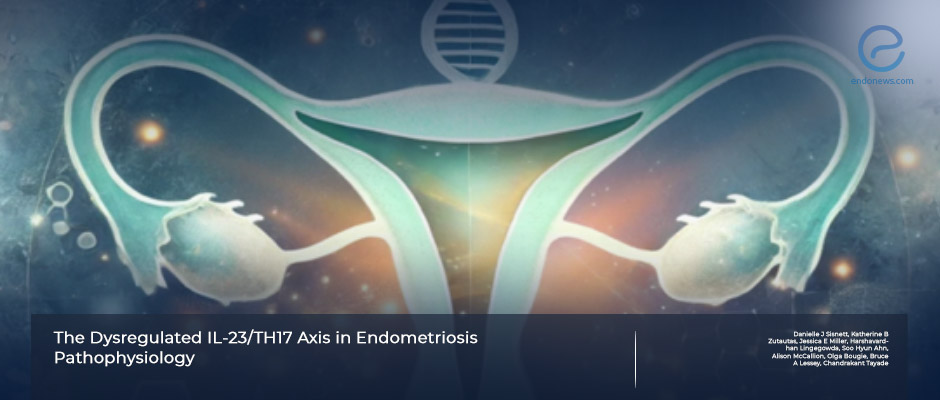The Dysregulated IL-23/TH17 Axis in Endometriosis Pathophysiology
Feb 12, 2025
The Dysregulated IL-23/TH17 Axis in Endometriosis
Key Points
Highlight:
- The IL-23/TH17 axis has a pivotal role in endometriosis: It contributes to immune dysregulation, lesion maintenance, and inflammation, suggesting a potential therapeutic target for disease modulation.
Importance:
- IL-23/TH17 axi is. dysregulated s in endometriosis, and this provides a novel mechanistic link to disease pathology.
- IL-23 may be a potential therapeutic target, existing IL-23–targeting treatments used in other chronic inflammatory diseases may be a foundation for future endometriosis management.
What’s done here?
- The study analyzed IL-23/TH17/IL-17 axis gene expression in endometriosis tissues (RNA isolation and analysis), and measured IL-23 protein levels in plasma and tissues.
- Various human cell lines were treated with recombinant IL-23 to examine its effects on cytokine secretion, cell proliferation, apoptosis, and angiogenesis.
- Naïve CD4+ T cells were isolated and cultured from murine spleens.
- Endometriosis was surgically induced in mice, and the effects of IL-23 treatment were assessed.
Key results
- IL-23 and several TH17-associated genes were significantly elevated in ectopic endometriotic tissues compared to eutopic and control tissues.
- IL-23 treatment in endometriotic cell lines led to increased production of mediators involved in lesion formation and maintenance.
- Immunohistochemistry showed trends of higher cell proliferation (Ki67) and vascularization (CD31) in IL-23-treated mice, but these differences were not statistically significant.
- Despite immune dysregulation, IL-23 treatment alone did not substantially affect lesion size or angiogenesis in the established mouse model.
Limitations
- Using immortalized cell lines, and endometrial carcinoma cells has important limitations.
- Syngeneic immunocompetent endometriosis mouse model may not be able to completely recapitulate the nature of human disease.
Lay Summary
In a study published in the Journal of Immunology, Sisnett et al. explored the therapeutic potential of endometriosis with IL-23/TH17/IL-17 axis with structured into three main investigative components: human sample analysis, in vitro cell culture experiments, and an in vivo mouse model of endometriosis.
The study demonstrates that IL-23 is a key driver of immune dysregulation in endometriosis, promoting pathogenic TH17 cell differentiation, immune cell recruitment, and inflammation in the lesion microenvironment. Despite these findings, the exact mechanistic link between IL-23 and endometriosis progression remains to be fully elucidated.
Future research should focus on correlating IL-23 with disease severity and evaluating IL-23–targeting therapeutics as a potential treatment strategy for endometriosis.
This study makes a strong case for IL-23 as a key immunomodulator in endometriosis, linking it to pathogenic TH17 differentiation, cytokine dysregulation, and immune cell recruitment. While further mechanistic studies are needed, these findings open new avenues for non-hormonal therapeutic strategies targeting IL-23, which could be particularly beneficial for endometriosis patients seeking fertility-preserving treatments.
Research Source: https://pubmed.ncbi.nlm.nih.gov/38466035/
endometriosis non-hormone treatment IL-23 Th17

